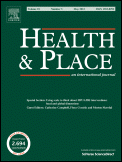
HEALTH & PLACE
Scope & Guideline
Exploring the Nexus of Health and Geography
Introduction
Aims and Scopes
- Health Disparities and Social Determinants:
The journal emphasizes research on health disparities, particularly how social determinants such as socioeconomic status, race, and geographic location affect health outcomes. - Built Environment and Health:
A core area of focus is the relationship between the built environment—such as housing, urban design, and accessibility—and physical and mental health outcomes. - Environmental Influences on Health:
The journal explores how various environmental factors, including green spaces, air quality, and urbanization, impact population health and well-being. - Community Engagement and Health Interventions:
Research on community-led health interventions and participatory approaches to improve health outcomes in specific neighborhoods and populations is a significant theme. - Geospatial Analysis and Health Research:
Utilizing geospatial methods to analyze health data and trends is a unique contribution, providing insight into spatial patterns of health and disease.
Trending and Emerging
- Mental Health and Urban Environments:
There is a growing focus on how urban environments, including greenspaces and community design, influence mental health outcomes, reflecting an increased awareness of the importance of mental well-being. - Impact of COVID-19 on Health Inequities:
Research examining the impacts of the COVID-19 pandemic on existing health inequities and community health has surged, highlighting the need for understanding health responses in crisis situations. - Intersectionality in Health Research:
A trend toward exploring intersectional factors—such as race, gender, and socioeconomic status—in health outcomes is emerging, emphasizing the complexity of health determinants. - Use of Big Data and Geospatial Technologies:
The integration of big data, machine learning, and advanced geospatial technologies in health research is becoming more prevalent, allowing for more sophisticated analyses of health trends and disparities. - Community Resilience and Adaptation Strategies:
Research focused on community resilience in the face of environmental changes and health crises, including climate change impacts, is gaining traction, reflecting a broader interest in sustainable health practices.
Declining or Waning
- Traditional Epidemiological Studies:
There appears to be a decline in the publication of studies solely focused on traditional epidemiological methods without incorporating spatial analysis or environmental factors. - Generalized Health Interventions:
Research on generic health interventions that do not consider the specificities of place or context has diminished, as the focus shifts towards more localized and tailored approaches. - Static Health Assessments:
There is a noticeable decrease in studies relying on static assessments of health outcomes, with a growing preference for dynamic and longitudinal approaches that consider changing environmental contexts. - Overemphasis on Individual-Level Factors:
Research that primarily examines individual-level health determinants without integrating community or environmental influences is becoming less common, as a more holistic view is favored.
Similar Journals
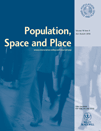
Population Space and Place
Illuminating Spatial Dimensions of Demographic ChangePopulation Space and Place is an esteemed academic journal published by WILEY, dedicated to advancing the fields of demography and geography, planning, and development. With an impressive 2023 impact factor and categorized in the top quartile (Q1) for both demography and geography, this journal serves as a vital platform for researchers, professionals, and students seeking to explore the spatial dimensions of population dynamics. Founded in 2004 and running through 2024, it has established itself as a significant contributor to scholarly discussions, evidenced by its high Scopus rankings, including rank #18 out of 139 in demography and #165 out of 821 in geography and planning. While the journal currently does not offer open access, it remains a key resource for those involved in academic research and policy formulation. With its focus on the interplay between population trends and spatial analytics, Population Space and Place is essential for anyone aiming to understand the complexities of population geography in a rapidly changing world.

HEALTH & SOCIAL WORK
Advancing interdisciplinary insights in health and social work.HEALTH & SOCIAL WORK is a prestigious academic journal published by Oxford University Press Inc., focusing on the intersections of health and social work within the social sciences. Established in 1976, this journal strives to enhance understanding and practice in these critical areas, offering insights into the complexities of health-related issues through a social lens. With a 2023 impact factor that positions it in the Q3 quartile of health and social work categories, it stands as a valuable resource for researchers, practitioners, and students aiming to address contemporary challenges in health care and social services. Although not an open-access journal, it ensures high-quality peer-reviewed content, making significant contributions to advancing knowledge and fostering interdisciplinary collaboration. As we move towards its convergence year of 2024, HEALTH & SOCIAL WORK continues to provide a vital platform for innovative research and discourse in the global health community.
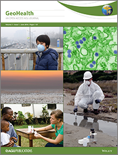
GeoHealth
Connecting Research to Real-World Health and Environmental ChallengesGeoHealth is a premier open-access journal published by the American Geophysical Union, focusing on the intersection of environmental and health sciences. Launched in 2017, the journal has rapidly established itself with an impressive Q1 ranking in multiple categories, including Epidemiology, Global and Planetary Change, and Public Health, reflecting its commitment to high-quality research and impactful scholarship. Covering a broad spectrum of topics, GeoHealth provides a platform for scientific discussions on key issues such as health, environmental sustainability, pollution, and governance. With an accessible model, researchers and practitioners can freely share and access vital findings, significantly contributing to advancements in public health and environmental management. Exploring critical dimensions of health in relation to environmental changes, GeoHealth is essential reading for those seeking to understand and address contemporary challenges in health and environmental sectors.

Geografia-Malaysian Journal of Society & Space
Unveiling Spatial Complexities in Malaysian ContextsGeografia-Malaysian Journal of Society & Space, published by the esteemed Universiti Kebangsaan Malaysia through its Faculty of Social Sciences & Humanities, stands as a vital platform for scholarly discourse in the fields of geography, social sciences, and spatial studies. With its ISSN 2180-2491 and E-ISSN 2682-7727, this journal emphasizes the importance of regional studies, fostering a deep understanding of societal dynamics within the Malaysian context and beyond. Although currently lacking impact factor and HIndex data, the journal is poised to contribute significantly to academic discussions, urging researchers, professionals, and students to explore spatial complexities influencing social structures. Geografia aims to publish high-quality, peer-reviewed works, focusing on innovative theoretical and empirical research that addresses contemporary issues in society and space. By promoting open access to its content, it ensures that knowledge is freely available, furthering academic engagement and collaboration in the global scholarly community.

Critical Public Health
Innovating solutions for global health challenges.Critical Public Health is a leading academic journal published by Routledge Journals, Taylor & Francis Ltd, dedicated to advancing the field of public health through rigorous research and critical engagement. Established with the aim of providing a platform for innovative and interdisciplinary scholarship, this journal has cemented its reputation within the Q1 category of Public Health, Environmental, and Occupational Health as of 2023. The journal spans a significant timeline from its inception in 1990 to the present, continuously addressing pressing health issues and the socio-environmental factors influencing public health globally. With an impressive Scopus rank of 144 out of 665 in its category, placing it within the 78th percentile, Critical Public Health serves as an essential resource for researchers, professionals, and students who aim to contribute meaningfully to public health discourse. Although currently not an open-access journal, its rich repository of articles facilitates the dissemination of important research findings, influencing public policy and health interventions worldwide. Based in the United Kingdom, the journal continues to foster a critical perspective on health and wellbeing amid evolving global challenges.
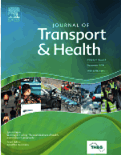
Journal of Transport & Health
Exploring the intersection of mobility and well-being.Journal of Transport & Health is a premier peer-reviewed journal published by ELSEVIER SCI LTD, focusing on the interdisciplinary nexus between transportation systems and public health outcomes. Established in 2013, this journal has rapidly ascended to prominence, earning a Q1 ranking in prestigious fields such as Health Policy, Public Health, and Safety Research as of 2023. With a special emphasis on understanding the complex interactions between transport environments and health, it caters to researchers, professionals, and students dedicated to advancing knowledge in these critical areas. The journal not only provides valuable insights into the impact of transportation on health but also addresses related topics in pollution and safety, reflected in its commendable Scopus rankings. Although not open access, the journal remains an essential resource for those seeking to influence policy and practice in transport and health, stimulating discourse and innovation in the field.

Journal of Public Health-Heidelberg
Empowering communities with impactful public health studies.The Journal of Public Health-Heidelberg is a distinguished publication in the field of public health, published by SPRINGER HEIDELBERG. With its ISSN of 2198-1833 and E-ISSN of 1613-2238, this journal serves as a vital platform for disseminating high-quality research, innovative methodologies, and significant findings that are pivotal for shaping public health policies and practices across the globe. Underpinned by a commitment to open access, the journal ensures that its contents are readily accessible to researchers, professionals, and students alike, fostering a collaborative environment for knowledge sharing and advancement in public health sciences. The journal's rigorous peer-review process and emphasis on impactful studies make it a valuable resource for academics and practitioners aiming to address pressing health challenges, improve community health outcomes, and promote evidence-based public health strategies. With the ever-evolving landscape of public health, the Journal of Public Health-Heidelberg stands at the forefront, engaging with contemporary issues and developing actionable insights through comprehensive research.
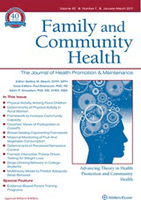
FAMILY & COMMUNITY HEALTH
Exploring the Intersection of Health and Community DynamicsFAMILY & COMMUNITY HEALTH, published by Lippincott Williams & Wilkins, is a prestigious journal that has been at the forefront of public health research since its inception in 1978. With its ISSN (0160-6379) and E-ISSN (1550-5057), the journal serves as a vital resource for professionals, researchers, and students dedicated to understanding the intricate dynamics between family and community health. Its significant impact is illustrated by its placement in the Q2 category within Public Health, Environmental and Occupational Health, highlighting its relevance and quality in a competitive field. The journal ranks #358 out of 665 in Scopus, further emphasizing its role in disseminating high-quality research. FAMILY & COMMUNITY HEALTH not only provides a platform for innovative research articles but also fosters collaboration among health professionals aiming to improve care delivery and promote community well-being. Researchers and practitioners alike will find invaluable insights and data within its pages, making it an essential addition to any academic collection.

Journal of Aging and Environment
Exploring the Nexus of Aging and EnvironmentThe Journal of Aging and Environment, published by Routledge Journals, Taylor & Francis Ltd, serves as a pivotal platform for interdisciplinary research concerning the intersections of aging, environmental factors, and social sciences. With a focus on understanding the implications of environmental changes on the aging population, this journal aims to foster insightful discussions and innovative solutions to address the challenges faced by older adults in diverse contexts. Achieving a Q3 ranking in multiple categories including Environmental Science and Gerontology, this journal not only reflects high-quality research but also contributes to shaping policy and practice in these vital fields. Researchers, academics, and practitioners are invited to engage with original articles and critical reviews that advance knowledge and understanding of aging in an ever-evolving environment. Though it is currently not an Open Access publication, the insights shared within its pages underscore the urgent need for awareness and action concerning the health and well-being of our aging society.

JOURNAL OF EPIDEMIOLOGY AND COMMUNITY HEALTH
Shaping tomorrow's health policies through rigorous research.JOURNAL OF EPIDEMIOLOGY AND COMMUNITY HEALTH, published by the esteemed BMJ PUBLISHING GROUP, stands as a leading journal in the fields of Epidemiology and Public Health. With an impressive impact factor and ranking in the Q1 quartile for both Epidemiology and Public Health categories as of 2023, it significantly contributes to the dissemination of critical research that shapes public health policies and practices globally. The journal has been a vital resource since 1978, continuously providing an academic platform for the latest advancements and discussions pertinent to community health, environmental concerns, and epidemiological studies. Researchers, professionals, and students alike depend on this influential publication for rigorous peer-reviewed articles, thereby enhancing its reputation as one of the top journals in the field. Despite the absence of Open Access options, the journal's scholarly contributions are evident, making it indispensable for anyone engaged in public health and epidemiological research.